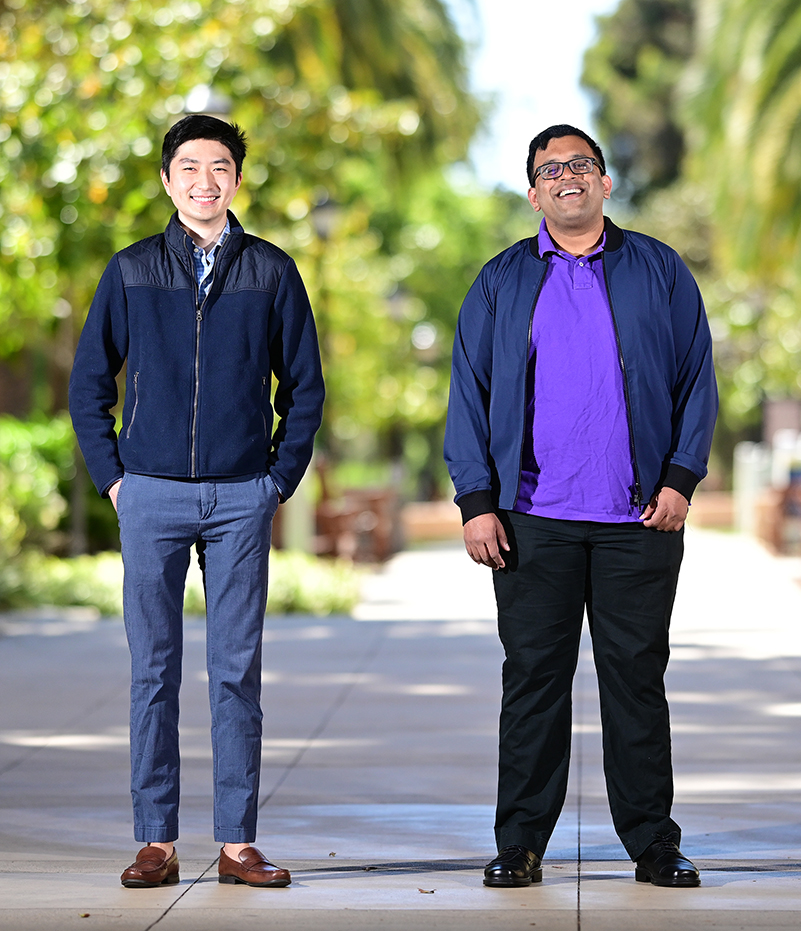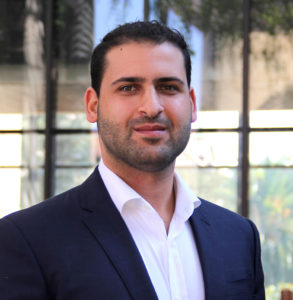Stanford Law and Medicine Students Author Nature Biotechnology Paper that Reimagines Biomedical Commercialization
Comprehensive Study Includes Citation Map Connecting 2.4 Million Patents to Biomedical Publications
Study Shows Articles Mentioned in Patents had Significantly More, and More Ethnically Diverse, Teams of Authors Compared to Non-patent Cited Studies
Nature Biotechnology article: “Comprehensive analysis of 2.4 million patent-to-research citations maps the biomedical innovation and translation landscape”
The following was first published in a Stanford Law Magazine article titled “Stanford JD in Hand, a “Scientific Marvel” Reimagines Biomedical Commercialization”
It’s the stuff of Silicon Valley legend: Nearly 50 years ago, a young venture capitalist cold-called a biochemist working on recombinant DNA technology at the University of California at San Francisco — and pharmaceutical giant Genentech was born.
To Ishan Kumar, this tale of serendipity is problematic. “That model — of a venture capitalist sniffing around a research lab to discover the next big thing in biomedicine — hasn’t changed,” he says. “There has never been a systematic way of bringing research to market.” What’s more, he says, not much is known about the scientists producing the most innovative work. For example, are they all white males or is there diversity in gender and ethnicity?

Kumar, JD 21 (PhD 24), thinks he has the fix, and it involves applying scalable data science techniques to identify biomedical discoveries faster. His solution, outlined in a study he co-led and published today in the peer-reviewed journal Nature Biotechnology, is unique in that it analyzes 2.4 million U.S. patents that cite published research as evidence of novelty. He says those citations measure commercial impact in ways that the traditional approach — of tracking how often published studies are referenced in other published studies — does not. When inventors cite research in their patent applications, they are motivated by the promise of future profits. Scholars sometimes reference other works simply to curry favor with peers.
“Patent-cited research is actually a very reliable rough proxy for commercialization,” says Kumar, who graduated from Stanford Law School this month and is now pursuing a PhD in stem cell biology and regenerative medicine at Stanford School of Medicine. Kumar and his collaborators compiled their dataset by mapping Google’s public archive of 125 million patents worldwide to the National Institutes of Health’s library of all published biomedical and life sciences articles in the U.S.
Spotlighting patent-cited research was just the beginning. They find, among other things, that articles mentioned in patents had significantly more, and more ethnically diverse, teams of authors compared to non-patent cited studies. They also find that work by female scientists is much less likely to be cited in patents than male-authored research. “What’s really shocking is that, despite the increasing presence of women in biology over the last 20 years, you don’t see their work being cited by patents any more frequently,” Kumar says. There’s this really persistent flat line.” Even when the study authors account for fields within biomedicine that are less likely to produce commercial-worthy insights, the gender gap barely shrinks.
Mark Lemley, one of Kumar’s professors at Stanford Law School who also happens to be the most cited scholar in IP law, says the mapping tool introduces a new and valuable measure of research innovation. “References to academic scholarship by patent owners themselves offer strong evidence of actual knowledge flow from the scholars to the patent owners,” says Lemley, the William H. Neukom Professor of Law, who directs the Stanford Law School Program in Law, Science & Technology. He also founded Lex Machina, Inc., a company that provides litigation data and analytics to law firms, companies, courts, and policymakers — one of several startups that began as a Stanford Law research project.
Embracing the Risk of Failure
For Kumar, the project started as a labor of love. As an undergraduate at Yale, he worked in a stem cell lab while double majoring in biology and history. There, he realized how massive — and siloed — biology’s innovation ecosystem is. “All of these different categories of research get piped into a system managed by lawyers, universities, venture capitalists and businesses who package them into an actual product,” he says. “A pure scientist might not understand how the law works or how finance works and vice versa.”
Kumar wanted to provide more visibility into the highly complex process, so he went to law school. “A law degree,” he says, “teaches you how the world works and that’s what I wanted to do for biomedicine.” Kumar saw his opportunity in a newly public Google patent database. His challenge was pulling together an interdisciplinary Stanford team to figure out how to leverage the data. It would be a monumental undertaking with no guarantee that it would lead to anything useful.

“I couldn’t stop talking about it, but most people just ran away from me,” Kumar says with a laugh. He credits Robert Weisberg, his criminal law professor and mentor, with encouraging him to pursue his goal anyway. “He told me essentially the same thing that my PhD mentor did, which is ‘Go for it. Even if this fails, you can always write a book about it.’ That was the beauty of this project: It was just pure exploration; at Stanford, there isn’t any sting to failure.”
George Zhang, JD 20, and Nathan Kahrobai, JD 20, eventually signed on and so did several others from across Stanford, including co-lead author James Zou, an assistant professor of biomedical data science in the Stanford School of Medicine. Of the paper’s 10 authors, eight hail from Stanford.
Weisberg, who also serves as faculty co-director of the Stanford Criminal Justice Center, says Kumar quickly caught his attention as a first-year in his criminal law course. “What I find particularly insightful and creative about Ishan’s research is that, in the hard sciences, patent citations are made for a very specific and technical purpose,” says Weisberg, the Edwin E. Huddleson, Jr. Professor of Law. “For researchers in the biopharma industry especially, that is where the rubber hits the road and actually leads to commercial products. Ishan is a scientific marvel and, with his combination of law and scientific expertise, he is going to continue to do great interdisciplinary work.”
That is Kumar’s plan. He says his approach to speeding up the commercialization of research can be adapted to other disciplines, including economics and law. The study authors have also developed a machine learning tool to scour the studies for deeper insights into the researchers themselves, and are currently linking their dataset to Stanford’s entire history of commercialized research. The idea is to be able to identify which scientists, and teams of scientists, make the most discoveries with market potential.
“This paper is just our launching point,” says Kumar.
